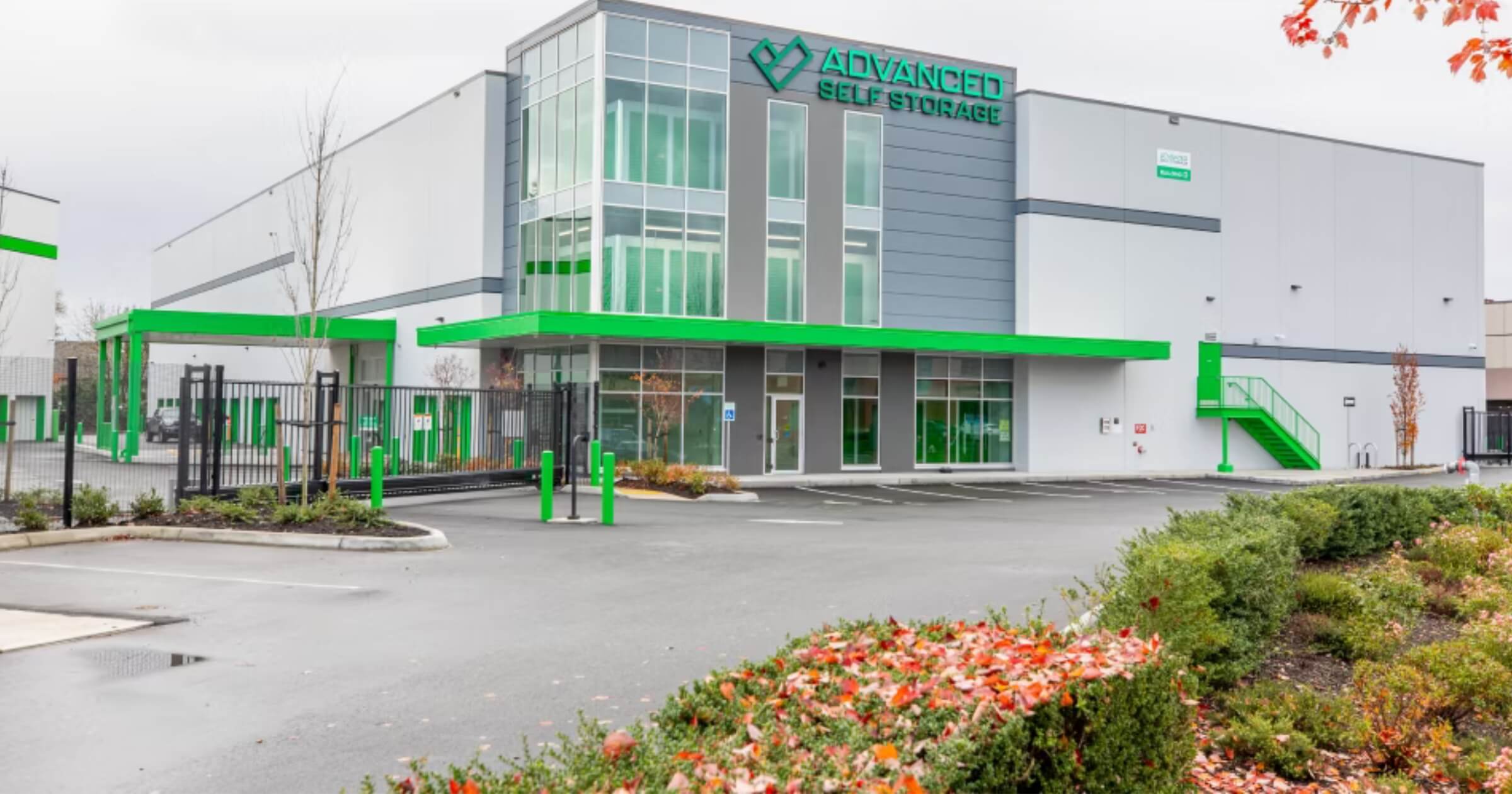Photo courtesy of https://nicolawealth.com/
Advanced Self-Storage in Maple Meadows become the first net-zero storage facility in Canada by achieving a zero-carbon building certification. This historic achievement signals a major step forward for sustainability in a sector that’s rarely in the green-building spotlight.
Certified by the Canada Green Building Council (CaGBC), the Maple Meadows net-zero storage facility earned its status by prioritizing energy-efficient design, clean energy sourcing, and thoughtful long-term operational planning. From the ground up, the 88,000-square-foot structure was built with sustainability in mind. Features like high-efficiency HVAC systems, LED lighting, advanced insulation, and an electric-only heating system powered by B.C.’s clean hydroelectric grid allowed the building to significantly reduce its greenhouse gas emissions down to virtually zero.
The self-storage sector is booming, with demand rising across Canada as urban densification increases and remote work reshapes how people use space. That growth comes with environmental consequences: more land use, more energy consumption, and more carbon-intensive builds. The Maple Meadows net-zero storage facility project flips that narrative, proving the industry can scale sustainably.
The project team, which included Etro Construction and Integral Group, leaned heavily on energy modeling and life-cycle carbon analysis to inform every design decision, from building envelope upgrades to mechanical systems.
“Maple Meadows proves that we can build a sustainable net-zero building and still provide a solid return on investment for our clients,” said Jared Nicola, Senior Project Manager at NWRE (Nicola Wealth Real Estate). “At Nicola Wealth, we feel that we have a responsibility to build sustainably.”
This project is helping companies rethink what a storage facility could be. “Pursuing the certification comes down to, as a company, we want to build sustainable buildings,” said Nathan Ma, NWRE’s Senior Development Manager. “What we always want to consider is, what are the regulatory targets in terms of sustainability in the coming years?”
According to CaGBC, buildings account for over 17% of Canada’s greenhouse gas emissions. So when even traditionally low-profile spaces like self-storage start going green, the ripple effects are worth paying attention to. These wins prove that net-zero isn’t limited to high-profile office towers or luxury homes but it’s viable for everyday infrastructure, too.
Advanced Self Storage reports energy savings and operational efficiencies that will continue to benefit both the environment and their bottom line for years to come, showing that sustainable construction and good business can intersect with amazing results.
As more developers seek ways to future-proof their buildings and meet tightening emissions standards, projects like Maple Meadows net-zero storage facility offer a practical, proven example of what works, heralding a sign of what’s to come.
Want more stories about sustainability in the built environment? Subscribe to our newsletter for fresh takes on green construction, industry innovation, and building the future.


